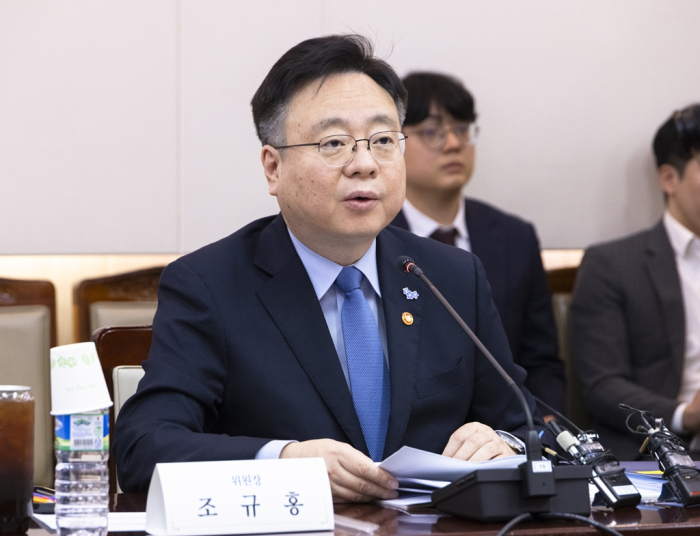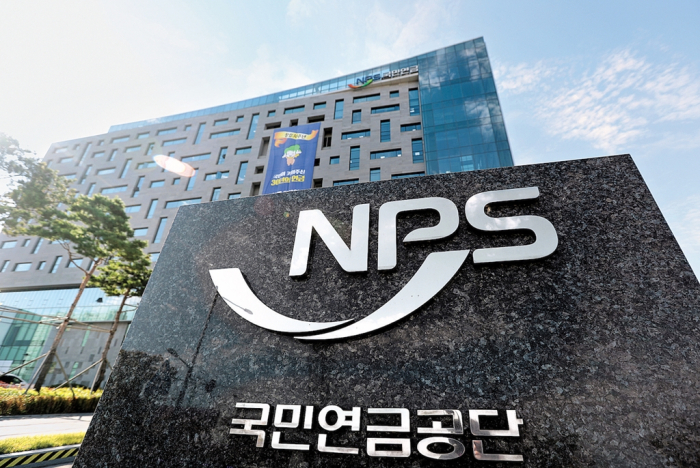NPS to hike risky asset purchases under simplified allocation system
Its first system change in 18 years comes as the pension fund is struggling to boost its long-term profitability
By May 02, 2024 (Gmt+09:00)
LG Chem to sell water filter business to Glenwood PE for $692 million


Kyobo Life poised to buy Japan’s SBI Group-owned savings bank


KT&G eyes overseas M&A after rejecting activist fund's offer


StockX in merger talks with Naver’s online reseller Kream


Mirae Asset to be named Korea Post’s core real estate fund operator



The National Pension Service (NPS), South Korea’s state-run pension fund, is introducing a new simplified asset allocation guideline under which it aims to increase its purchase of risky assets, including stocks and alternative asset products.
In its first system reshuffle in 18 years, the state fund said it is introducing a 20-year asset allocation standard portfolio to boost long-term profitability.
Under the plan, approved at an NPS fund management committee meeting, the state fund’s top decision-making body, the standard portfolio will have a top-line classification of risky assets (stocks) and safe assets (bonds) with targeted return rates over a 20-year investment horizon.
The new top guideline will be supplementary to the current five-year strategic asset allocation (SAA) system, which sets mid-term goals across various asset classes such as local stocks, local bonds, overseas stocks, overseas bonds and alternative investment.
Within the SAA boundary, the state fund sets annual tactical asset allocation (TAA) goals.

RISKY ASSETS SET AT 65% OF THE FUND
The fund committee meeting, presided over by Health and Welfare Minister Cho Kyoo-hong, also decided to raise the proportion of risky assets to 65% of the NPS’ entire fund while limiting safe assets to 35% under the long-term fund operation strategy.
“The current asset allocation system, introduced in 2006, has virtually no long-term management goal, investing only in pre-determined asset classes,” said Minister Cho. “Under current guidelines, it has been difficult to properly respond to market changes and the emergence of new financial products.”
Under the current system, the NPS has invested its 171 trillion won ($124 billion) alternative investment fund in private equities, infrastructure and the property market at a 4-3-3 ratio.
With the introduction of the new standard portfolio, however, the NPS can spend the alternative investment fund disproportionately to maximize investment gains.

With 1,048.8 trillion won worth of assets under management (AUM) as of January 2024, the NPS is Korea’s largest institutional investor and the world’s third-largest pension fund.
Last year, the NPS delivered its best investment results since its inception in 1999 with a 13.59% annualized return.
The majority of profits came from listed stocks. Domestic and overseas stocks achieved 22.12% and 23.89% returns, respectively. Local and overseas bonds respectively logged 7.4% and 8.84% returns.
Alternative investments posted a 5.8% return last year.
In Korea, which has one of the world’s fastest-aging populations, the state pension fund’s assets are forecast to start running a deficit as early as 2041 and could be depleted by 2055, analysts warn.
Write to Byeong-Hwa Ryu at hwahwa@hankyung.com
In-Soo Nam edited this article.
-
 Pension fundsNPS to commit $1.1 billion to external managers in 2024
Pension fundsNPS to commit $1.1 billion to external managers in 2024Apr 28, 2024 (Gmt+09:00)
2 Min read -
 Pension fundsNPS loses $1.2 bn in local stocks in Q1 on weak battery shares
Pension fundsNPS loses $1.2 bn in local stocks in Q1 on weak battery sharesApr 21, 2024 (Gmt+09:00)
3 Min read -
 Pension fundsNPS' former key players move to law firms as its voting power increases
Pension fundsNPS' former key players move to law firms as its voting power increasesApr 04, 2024 (Gmt+09:00)
2 Min read -
 Korean stock marketNPS to invest up to $8.2 bn in undervalued Korean stocks
Korean stock marketNPS to invest up to $8.2 bn in undervalued Korean stocksMar 01, 2024 (Gmt+09:00)
3 Min read -
 Pension fundsNPS logs record return rate in 2023 on stocks’ bull run
Pension fundsNPS logs record return rate in 2023 on stocks’ bull runFeb 28, 2024 (Gmt+09:00)
2 Min read -
 Shareholder activismNPS chief questions fairness in POSCO’s CEO selection process
Shareholder activismNPS chief questions fairness in POSCO’s CEO selection processDec 29, 2023 (Gmt+09:00)
3 Min read -
 Pension fundsNPS fills basket with China reopening, cosmetics shares; tech firms sold
Pension fundsNPS fills basket with China reopening, cosmetics shares; tech firms soldOct 06, 2023 (Gmt+09:00)
3 Min read


